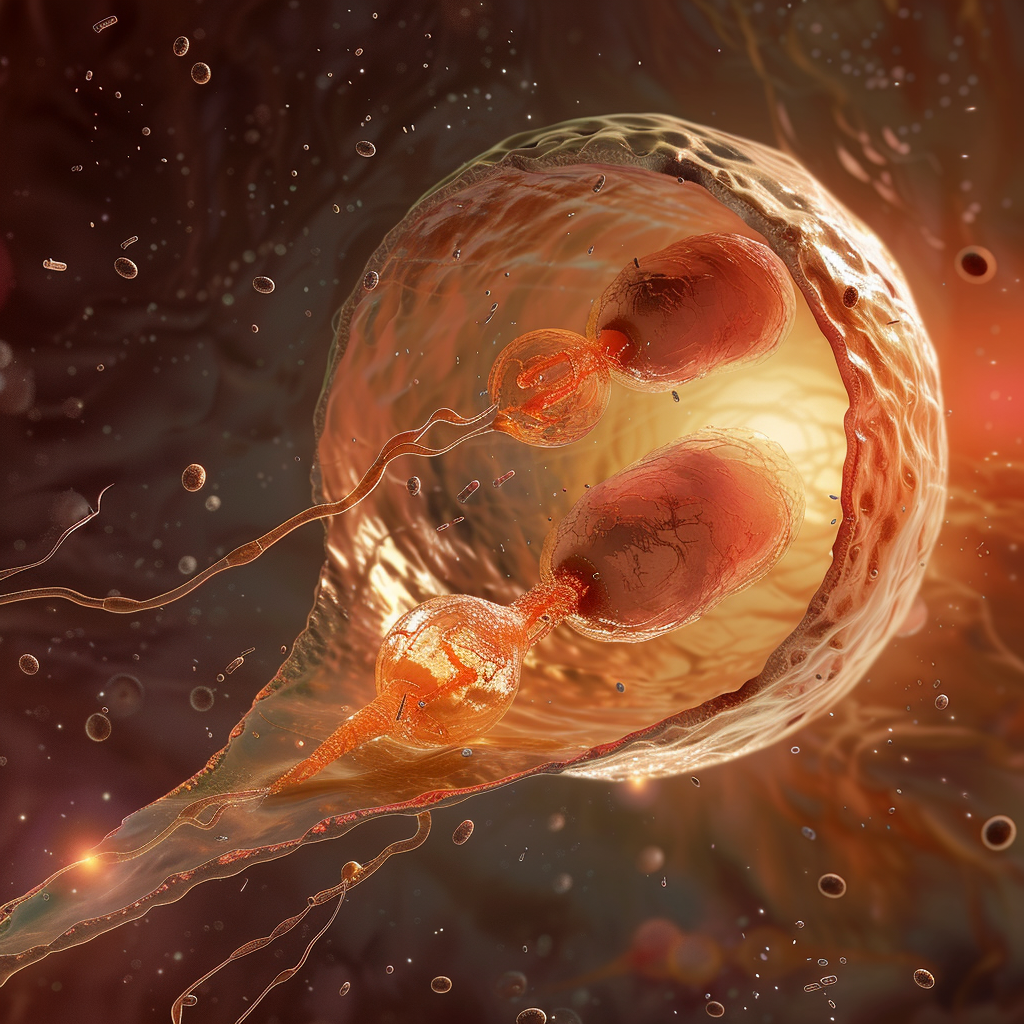This article explains how life develops from a fertilized egg, and in particular, how the gray matter plays an important role in early development.
Even complex organisms like humans begin as a single fertilized egg. As life progresses from simple to complex, it starts with a fertilized egg and goes through the stages of cell proliferation, differentiation, and morphogenesis. This process is called development.
The development of life is a marvel of nature. The fertilized egg, which is just a single cell at first, multiplies through cell division into many cells, each of which differentiates to take on a specific role, forming tissues and organs. This complex and sophisticated process ensures the normal development of an organism and is regulated by the interplay of many external and internal factors. In particular, the process of cell migration and arrangement during early development is a crucial step that determines the structure and function of later organisms.

During the formation of a fertilized egg, which is the fusion of a sperm and an egg, the egg becomes an embryo. The egg is composed of a ‘plant hemisphere’ and an ‘animal hemisphere’. The vegetative hemisphere is the part that contains the yolk, which is concentrated with nutrient molecules and is mainly used for storage, while the animal hemisphere is the part that contains many organelles and is mainly used for metabolic activities. However, in amphibians, the cortex of the vegetative hemisphere is devoid of pigment, the cortex of the animal hemisphere is highly pigmented, and the inner cytoplasm is less pigmented, making it easier to observe the development of the fertilized egg. When the sperm enters the animal hemisphere and fuses, the pigments cluster around the sperm entry point, forming a black spot. However, the cytoplasm inside the fertilized egg does not rotate with the cortex, exposing a region of cytoplasm at the animal hemisphere border opposite the sperm entry point. This area looks like a gray crescent. This is why it’s called the “gray crescent”.
The formation of the gray nephron is crucial in this process, as it determines the position and fate of cells during early development. The gray matter acts as an important signal in the early stages of development, guiding cells to migrate and differentiate in specific directions. This means that it is an essential step for normal development.
The importance of the gray matter has been demonstrated through various experiments. In the 1920s, the German biologist Spemann studied development in salamander eggs. He tied one fertilized egg so that the gray matter was split on both sides, and another so that it was only on one side. The result was that the fertilized egg with the gray matter split in two progressed through the stages of development, with both cells showing normal development, but the egg without the rest of the gray matter did not show normal development. The results of this experiment show that the gray matter has a crucial role in normal development.
The gray matter, which is created as the cytoplasm rearranges, contains elements that direct cell movement to begin the next stage of the blastoderm. This is when the fertilized egg divides and arranges itself in layers on the surface, with an empty space in the center. This element of the gray matter signals the cells to migrate, and the germ layers of endoderm, ectoderm, and mesoderm are formed. Through this process, endoderm becomes the digestive and respiratory systems, while ectoderm becomes the nervous system and skin. In addition, mesoderm becomes body organs such as blood vessels and bones. The gray matter is the trigger for the fertilized egg, a single cell, to differentiate into the tissues of body organs through a series of processes.
During this process, cells interact with each other, send and receive information, and find their proper place and role. The signaling between cells is highly sophisticated, and it’s important that each cell moves to the right place at the right time. These sophisticated regulatory mechanisms ensure the normal development of an organism, which results in the formation of an organism with a complex structure and function.
Developmental processes are regulated not only by physical and chemical changes, but also by genetic factors. The regulation of gene expression, the action of transcription factors, and the activation of signal transduction pathways all work together to determine the fate of cells and their differentiation into different cell types. Environmental factors can also have a major impact on the developmental process. Changes in the external environment, nutritional status, and stressors can alter developmental processes, which can ultimately affect the structure and function of an organism.
In the end, the development of a tiny organism from a fertilized egg to a complete organism through a sophisticated process is a marvel of nature. It’s a process in which countless cells and tissues work together to create a unified organism, giving us a deeper understanding of the mystery and complexity of life. Studying the development of living organisms provides important clues to understanding the origin of life, identifying the causes of disease, and developing new therapies. As such, developmental research is an important branch of life science, providing a wealth of information that directly impacts our lives.
